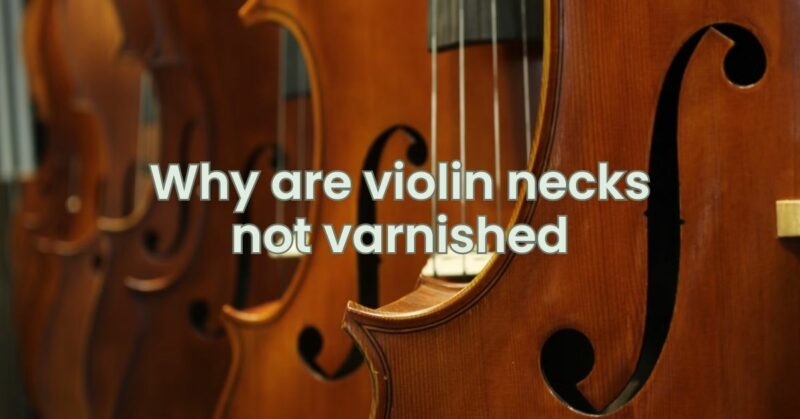If you’ve ever closely examined a violin, you may have noticed that while the body and scroll are often adorned with varnish, the neck of the instrument remains unvarnished. This deliberate choice isn’t a random omission but rather a purposeful decision rooted in both practical and historical considerations. In this article, we’ll delve into the reasons why violin necks are not varnished.
Purpose of Varnish on Violins
Before exploring the reasons for the absence of varnish on violin necks, let’s understand the primary purpose of varnish on violins. Varnish serves several crucial functions:
- Protection: Varnish forms a protective layer over the wood, shielding it from environmental factors such as moisture, humidity, and changes in temperature.
- Aesthetics: Varnish enhances the visual appeal of the instrument, giving it a rich, lustrous appearance.
- Acoustic Properties: High-quality varnish can impact the sound quality and resonance of the instrument by influencing how vibrations travel through the wood.
Reasons for Unvarnished Violin Necks
1. Playability and Comfort
One of the primary reasons violin necks are left unvarnished is for playability and comfort. The neck is the part of the violin that comes into direct contact with the player’s hand, and adding varnish to this area can result in a slippery surface. A smooth, unvarnished neck allows the player to have a secure grip and control over the instrument, enabling them to navigate the fingerboard more effectively.
2. Reducing Friction
The unvarnished neck creates less friction between the player’s hand and the wood. This lack of friction allows for smoother shifts between positions and faster finger movements, particularly during intricate passages and rapid sequences.
3. Tradition and Aesthetics
Historically, violin necks have traditionally been left unvarnished for both practical and aesthetic reasons. This tradition has been passed down through generations of violin makers. Additionally, the natural wood of the neck offers a pleasing contrast to the varnished body of the instrument, contributing to its visual allure.
4. Sound Transmission
The neck of the violin plays a role in transmitting vibrations from the strings to the body of the instrument. Leaving the neck unvarnished allows for a more direct transfer of vibrations, potentially contributing to the instrument’s resonance and tonal qualities.
5. Consistency with Maintenance
Unvarnished necks also simplify maintenance and repairs. When adjustments, repairs, or refinishing are needed, working on an unvarnished neck is often easier and requires less preparation and cleanup.
Conclusion
The decision to leave violin necks unvarnished is rooted in a combination of practical considerations and respect for tradition. While varnish is essential for protecting and enhancing the appearance of the violin’s body, the unvarnished neck offers essential benefits in terms of playability, comfort, and sound transmission. This harmonious balance between function and tradition contributes to the instrument’s overall excellence and the joy of playing a violin that has been thoughtfully designed for both aesthetic and musical considerations.


